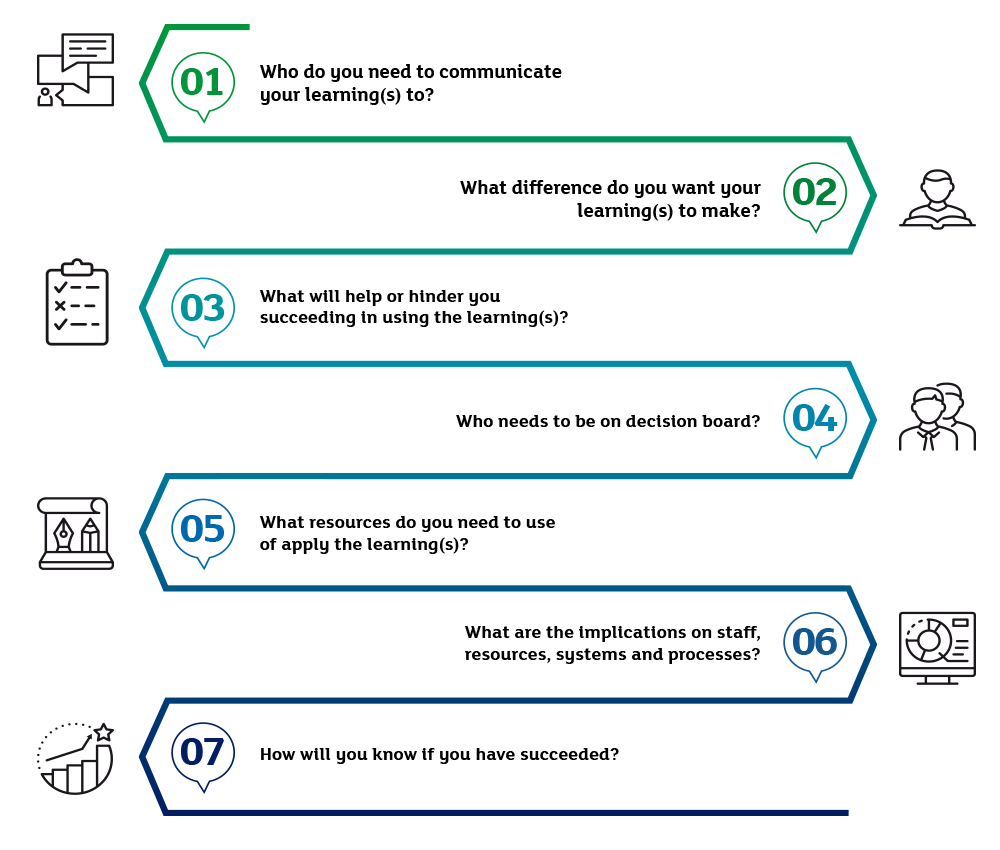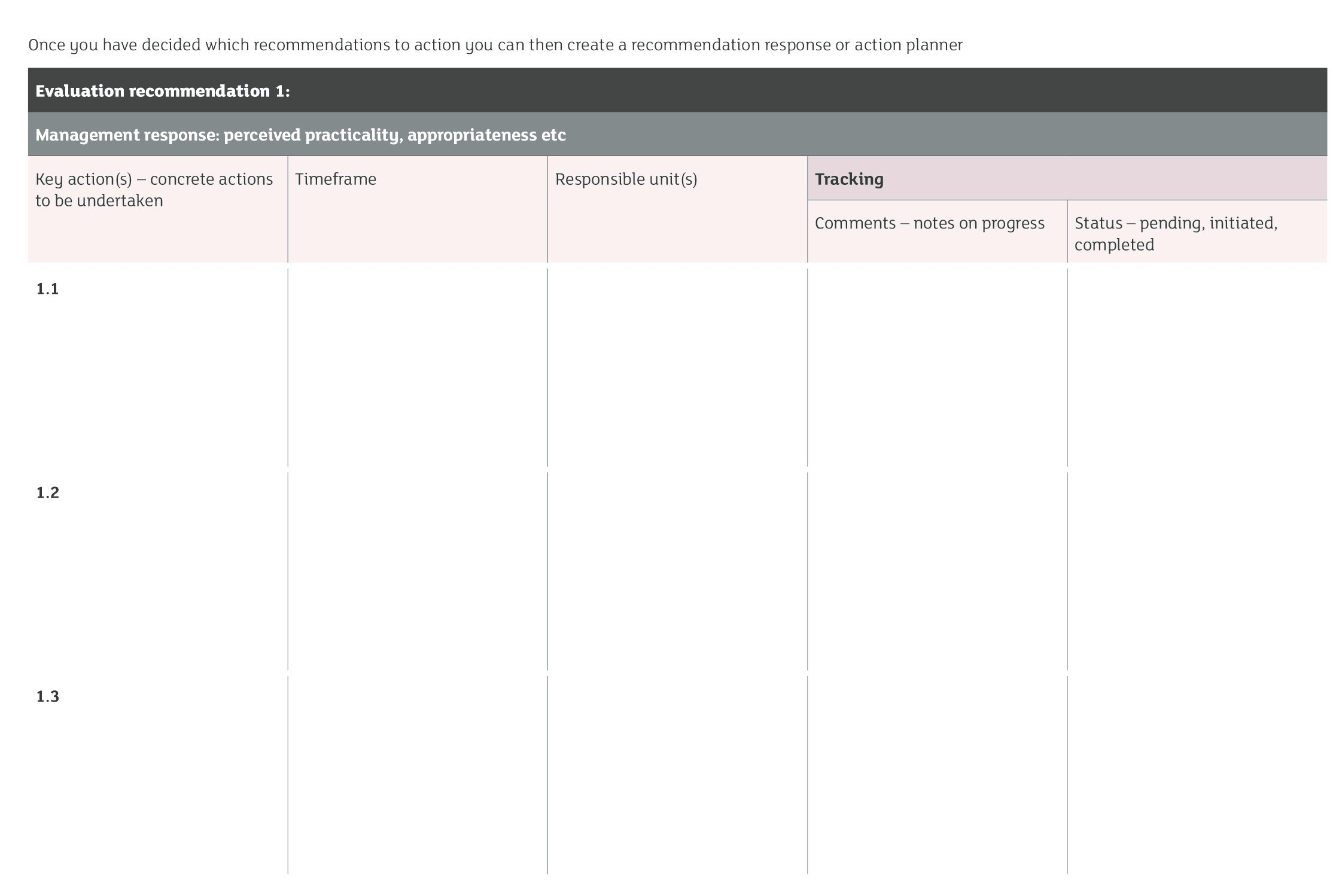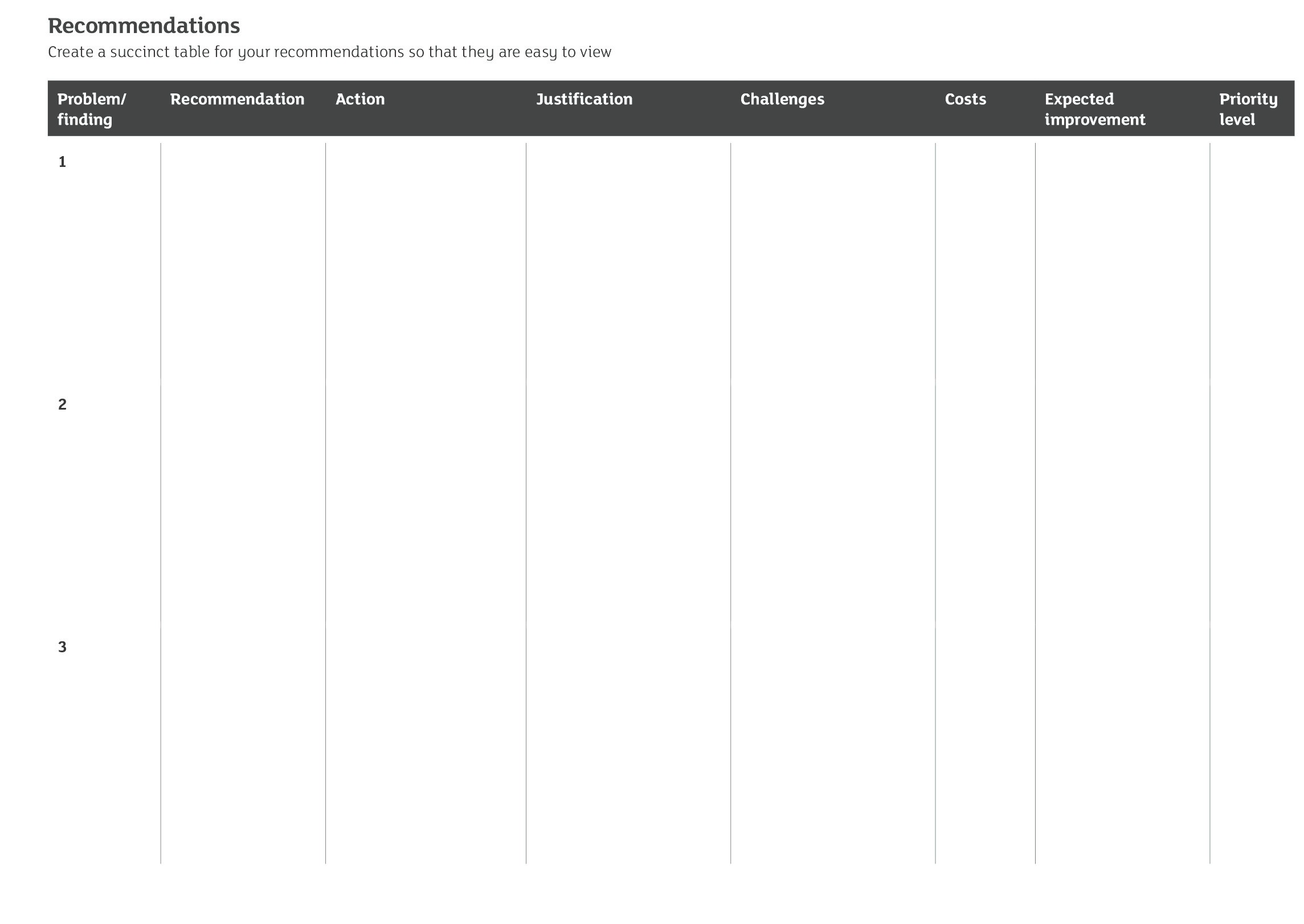
Report & Support
Once you have collected and analysed your data, you will need to write up your findings in a report. This report will create a final record of what has been done, findings and lessons that were learned.
Not every project will be as effective as you hoped or meets its aims and objectives. If it didn’t, try to understand why not, and explain this in your report. This will help you, and others, to use what you have learned to improve future activities. Additionally, when the results were not what you were hoping it can be tempting not to publish your report. Try to avoid this temptation as others can learn from your experiences.
1. What are the reporting requirements?
It’s important that you consider this from the start of you evaluation, as different intended users will have varying needs. You may want to think about:
-
What do you need to include?
-
Who will see my report? Who is the audience?
-
Senior management and elected members. This can be to evidence the importance and relevance of what has been done in order to justify the money that has been spent, and to make a case for future investment.
-
External partners or stakeholders, e.g. community groups, police. Others may have invested time or financial support in the project - prove to them the effect that it has had, and they’ll be keener to participate again.
-
Your peers. In the future, your colleagues will be planning new interventions, initiatives and campaigns. If they can refer to a concise and coherent report, it will help them decide what to do next time and avoid others needlessly reinventing the wheel.
-
How will my findings be presented?
-
How does the audience prefer to receive information? Written, visual, numbers or a mix of all three?
-
What access to technology does my audience have?
-
What length of report is best for my audience? Consider different formats: presenting findings at staff forums/conferences, short videos, posters or infographic
-
What is the purpose of the report?
-
Is it a final report? Or an interim report?
-
To document lesson learned?
-
To monitor and track progress?
-
To report to donors, partners or the community?
Further reading
Identifying reporting requirements
Develop a communication plan
2. What will your report look like?
The E-val-u-it toolkit can help you with the layout of format of your report as it will automatically generate a template for you based on your responses to the questions. If you would like to write your report without the toolkit, then the following sections are often included:
-
Executive summary (optional) – Summarises the main findings of your report.
-
Introduction - Introduce the problem that your intervention aims to address, and detail the intervention that took place and who it was aimed at. You should also include any evidence you have used to back up the approach you have taken to delivering your intervention and the aims and objectives of your project.
-
Methodology - explain how the evaluation was conducted, including the methods you used and the purpose of the evaluation. There should also be some description of how the data was analysed.
-
Results - this section should describe what you have found. If you collected quantitative data, your findings should be reported in tables and graphs. If you collected qualitative data, you should use a selection of quotes to illustrate the themes of your data.
-
Discussion (optional) - discuss and interpret the results of your evaluation in more depth.
-
Conclusions - provide an overall summary of your results, discussing whether your intervention met your aims and objectives. You should also state what your results mean in the wider context of the safety issue you are addressing.
-
Recommendations - in this section, write down what you think should be done based on what you have found. If you did not meet your aims and objectives, consider how you can ensure that they could be met in future. Even if you did meet your aims and objectives, your recommendations can be based upon further improvements to your intervention. It is important to note that this section of the report can also be used to recommend changes in policy if your findings suggest that this is appropriate.
However, a full technical report layout as above may not be needed to meet the requirements of your audience. If this is the case, you will need to think about other ways to present your findings so that the reader can quickly and easily understand the key points.
3. Think about presentation
-
Use simple and concise sentences. It is best to avoid using too many jargon terms and acronyms, as these might be hard to understand for your audience.
-
Use headings to make your report easy to navigate.
-
Give tables and graphs a number. These should be clear enough for people to understand without a lengthy description.
-
You will also need to maintain a clear referencing style throughout the report. There are some tools you can use to generate references, such as online reference generators or the referencing function in Microsoft Word.
-
Don’t assume any appendices will be read. If the report doesn’t make any sense without it; it should be included in the main body of your report.
4. Recommendations
A recommendation is advice about what the best course of action is to achieve improvements in an intervention. Recommendations should be succinct and specific solutions that are measurable. They are based on the conclusions of your report and shouldn’t include any new information.
Recommendations may be formative or summative and may have various levels:
To make recommendations achievable, check that they are ‘SMART’
-
Specific: explain specific measures to solve an issue
-
Measurable: there must be a way to measure the success of your recommendation
-
Achievable: does it resolve the problems presented in the data? Does it improve the current situation?
-
Relevant: is it relevant to the audience? Is it relevant to your organisation?
-
Time based: when will you know the recommendation has been achieved? When will you measure again?
Support
It’s important that once you have written your report that you are able to support the use of its recommendations and learning further. This may be a responsibility shared by you, senior managers, funding partners and other stakeholder. Below are a couple of templates that you can use with colleagues, stakeholders or senior management so that the findings of your evaluation are acted upon.



What next?
Understand
Go back to the previous step of the evaluation process.
Toolkit
Click here to find out about the next step in the evaluation process